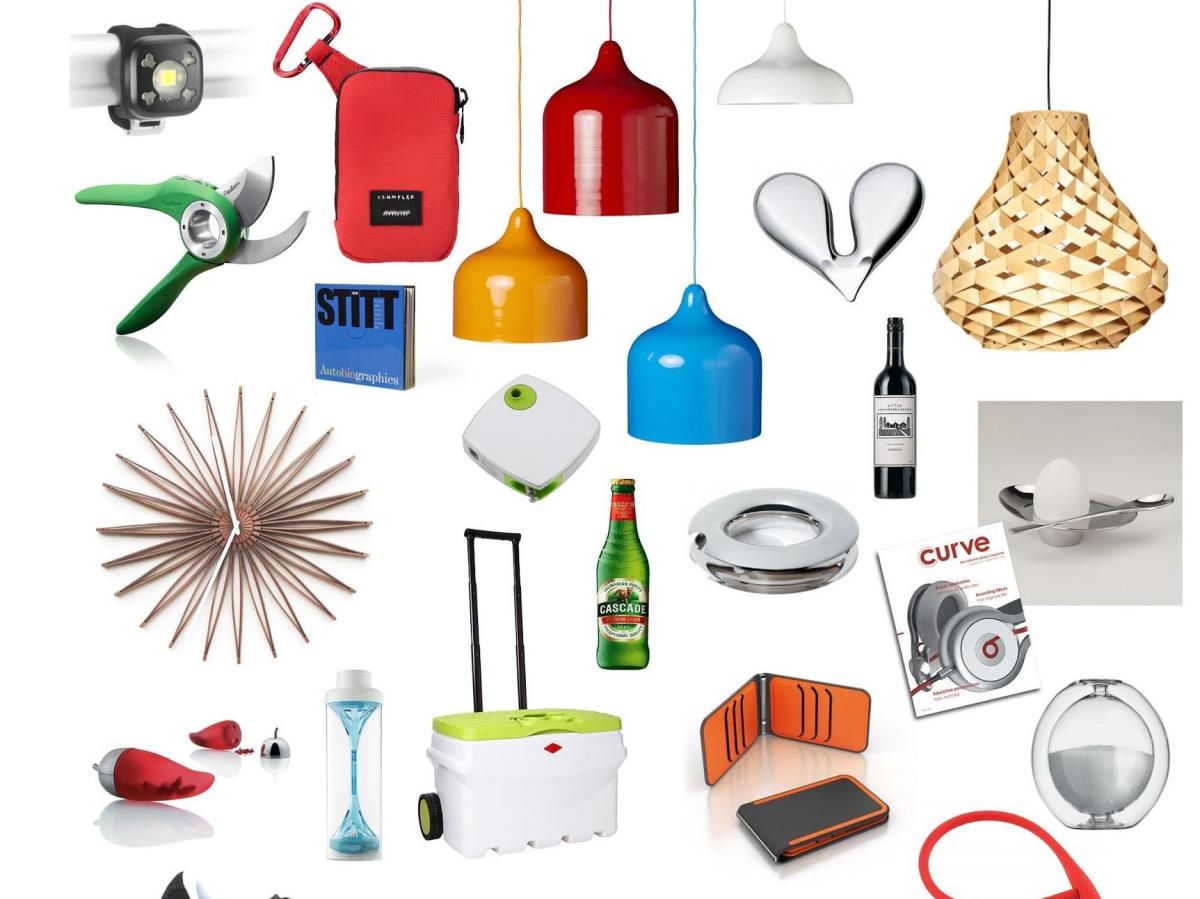Image: Australian products selected by Ian Wong Research.
In 2010, a number of professional associations representing the design professions launched an alliance with the aim of advocating for a national design policy for Australia. This was timely. Simon Crean, then Arts Minister, had committed to considering a design policy as part of the 2010 election campaign. The newly formed Australian Design Alliance (ADA) jumped on Crean’s commitment and began to advocate for and shape a national design vision for Australia.
The ADA believed that important aspects of design policy are not only cultural, but are part of the main game within the industry portfolio. This is because design is inherently linked to the economics of industry and manufacturing. Both in itself and embedded in other industries, design contributes much to economic growth. Without design employed in all aspects of an enterprise, business flounders. With design, business thrives.
But we still don’t have a national design policy. Why?
Some inspired souls in the Department of Industry were listening to this proposition, and there was definite support from the Office of the Arts, but the jockeying between the two reached a stalemate. Creative Australia was finally released with some reference to design and related initiatives. While it was good to have this recognition, it was not the design policy promised nor what the ADA had sought in its submission.
What will remain of Creative Australia under the new government is yet to be revealed.
Stuart Cunningham, Distinguished Professor in the Creative Industries Faculty at QUT says in his recent article for The Conversation, “Design has been conspicuously absent from national policy attention since its excision from the purview of the Australia Council in the 1980s. It must now come back into focus, if Australia is to turn to the creative economy as part of its next big boom”.
Towards the end of 2011 the ADA brought Sir George Cox to Australia to help us to explain how design is integral to business. Building on his 2005 review and the excellent work of the UK Design Council, recent research by the Warwick Business School demonstrates that:
Design is now firmly on the business agenda. No longer the cherry on the cake for high-end goods and luxury brands, over the past decade it has gained relevance for the way organisations are structured, how they operate and how they think. An increasing number are starting to use design strategically – to differentiate themselves from the competition, to launch new brands and strengthen existing ones, and to inform strategic choices. There is already considerable evidence for design acting as a mechanism for business growth and innovation.
The European Commission is equally emphatic about the value of design, “During hard economic times investment in design can give enterprises a competitive edge over rivals, which is why Europe must take full advantage of its global leadership position in design”.
Australia needs to pay attention to design now, not in some distant future when we have things under control. We need to recognise what progressive countries in many part of the world are beginning to understand, that the principles of design process are critical for all business enterprise as a means of strategy and development.
The ADA was established to harness the collective voice of its members: to work on issues of common concern to the 500,000 plus designers working across the professions. Collectively the design professions want to see the economic, social and cultural benefits of good design realised for all Australians; a country that values good design and design thinking; that integrates design into business and government services; and that promotes the very best of Australian design internationally.
A national design policy would provide necessary leadership and a framework for activity in the design space that would maximise value for all Australians.
The ADA is ready to work with the Federal Ministers for Industry and the Arts, state governments and broader industry to move forward and develop a national design policy – a policy that that would articulate our vision for an Australia which stands out globally as a creative, innovative country that is committed to a future by design.
Four representatives from ADA member organisations share their thoughts on why we need a national design policy.
A National Design Policy will position Australia internationally as a leader in design and highlight the role of design in creating a modern, sophisticated and intelligent Australia, capable of meeting the challenges of the 21st century and beyond.
Dr Brandon Gien CEO, Good Design Australia, Chair, Australian International Design Awards, President, International Council of Societies of Industrial Design (ICSID)
Our cultural expression and the design of everyday things is the mark of our time and place and our historical signature. The lateral ideas and problem solving skills of designers help to shape positive change in our complex challenging world. For this visionary purpose, Australia needs a national design policy.
Tamara Winikoff, Executive Director, National Association for the Visual Arts
Imagine leadership that would build the capacity of our youth to creatively deal with the challenges of an increasingly complex world, allow business and industry to remain competitive and differentiate itself in the global marketplace more effectively, help re-imagine new answers to those social problems that have evaded us for far too long. Design has proven itself as one of this century’s most empowering tools and a driving force behind innovation that brings ‘structure’ to the best of our creative ideas. A National Design Policy would assure critical leadership through the support of programs, initiatives and opportunities that provide design-led solutions to Australia’s greatest challenges. Steven Pozel, Director Object: Australian Design Centre (On behalf of the Australian Craft and Design Centre Network)
Design is becoming an increasingly critical component in the success of industries worldwide. Substantial differences can be made to a bottom line by good design and this is increasingly evident in the Australian film, theatre and interactive multimedia industries. Australia is a modern and progressive country that would benefit greatly from a National Design Policy. This is part of what being a Clever Country means. George Liddle, Australian Production Design Guild






